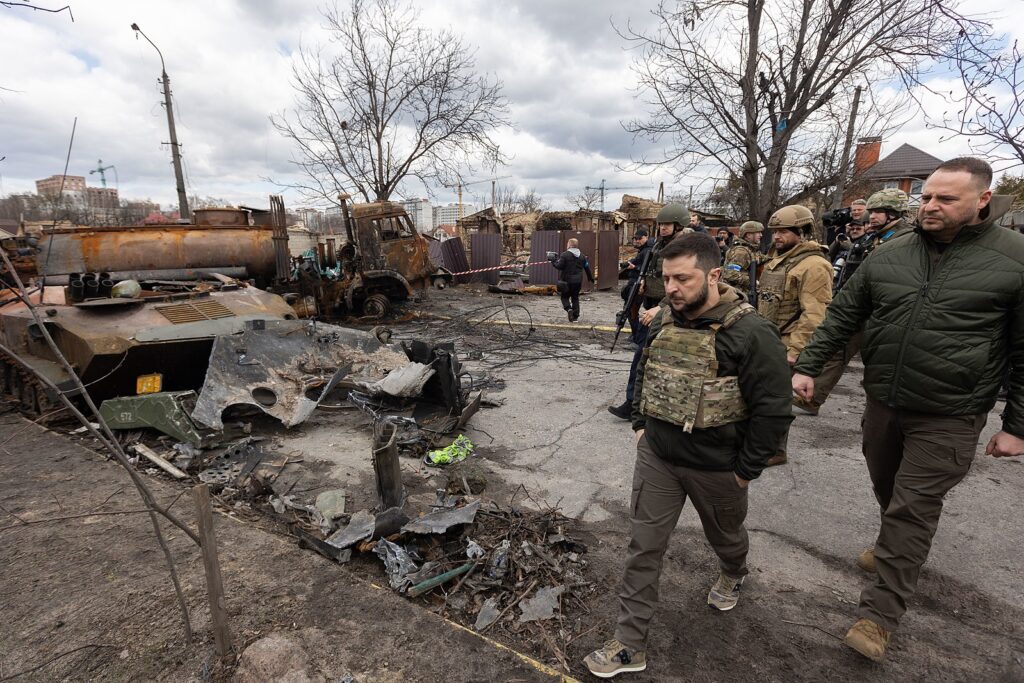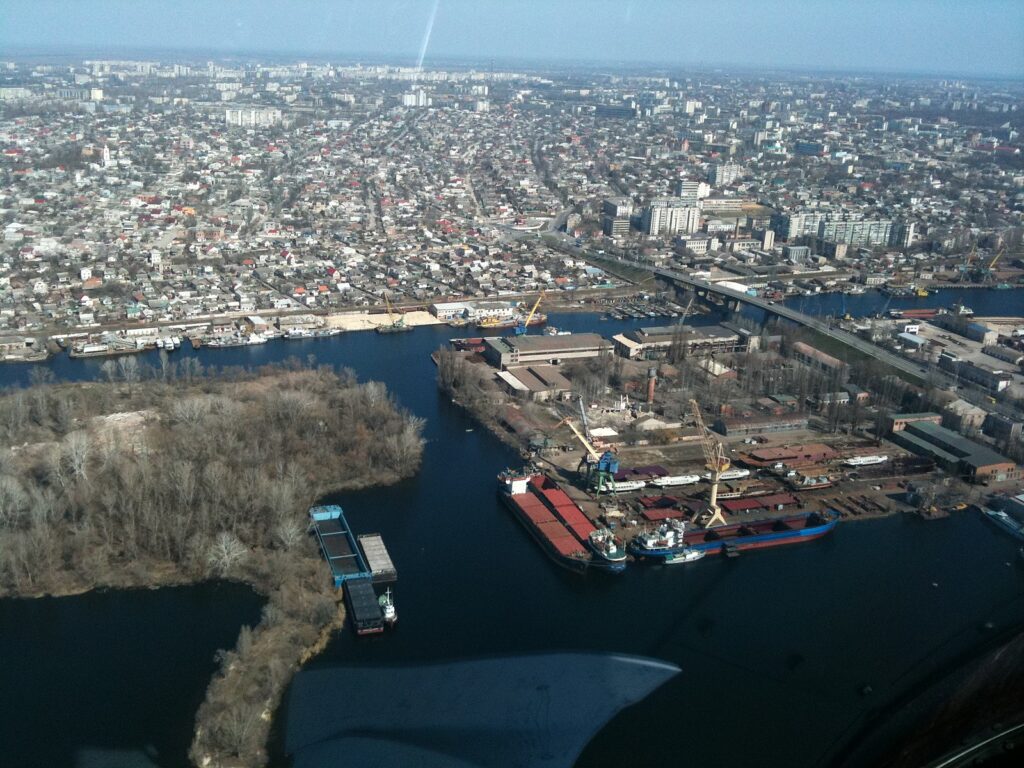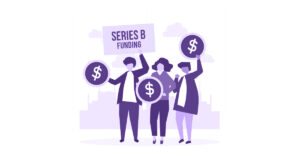
It was February 24, 2022, when Russia began its brutal attack on Ukraine. The Ukrainian people were caught off guard, with little to no time to escape the violence that had erupted throughout the country.
Bogdan, a crypto enthusiast and hipster from Kyiv, was visiting Bucha at that time and quickly found himself in the midst of it all.
Bucha – once a magnet for young families due to its well-developed infrastructure, green spaces, affordable homes, and good schools – turned into a living nightmare in March as Russian troops stormed the region. The invasion sparked fear and panic in the population. People rushed to flee their homes, leaving everything behind. The war took a heavy toll on Bucha’s civilian population: countless lives lost, thousands injured or disabled, and families torn apart.
One day, when a humanitarian corridor was announced, Bogdan and dozens of other Ukrainians decided to use this opportunity to evacuate from the occupied city. Having once again violated agreements and international law, Russian soldiers fired on “green corridors.”
They shot Bogdan in the leg despite a white stripe wrapped around his arm. He collapsed, and the next thing he remembered was a room with white walls that turned out to be a medical ward in Kyiv. Here reality crashed down on him in full force – his leg had to be amputated. He was heartbroken and lost hope for his future.

Meanwhile, Daryna, a QA engineer from Lviv, bravely ventured off to the front lines as a volunteer, delivering supplies such as food, first aid kits, and military equipment.
While going on these humanitarian missions, she was deeply impacted by the atrocities she experienced. Planes roared overhead while explosions echoed through trenches filled with soldiers – just like something out of a movie scene but much more real than ever! Besides Russian bombs, Daryna and her fellow volunteers also faced a much different type of enemy – exhaustion, fear, and despair.
Working amid an invasion of your country
Alex had been working remotely as an AI software engineer from his home in Odesa when the war broke out. His job was to help a US-based gaming studio build new features for their best-selling AI game.
Still, he knew he couldn’t just sit by and do nothing once the full-on invasion began. While keeping his full-time job, he joined Ukraine’s IT Army and dedicated all his spare time to undermining Russia’s cyber infrastructure, hacking their sites and fake news resources, and fighting back Russian cyber attacks.
The months went by as Alex completed mission after mission, but one day in April, everything changed. A Russian missile struck his parents’ house, just a stone’s throw away from his own place; they were killed instantly. Distraught at his loss and filled with grief and anger, Alex wanted revenge.
Without hesitation, he joined the Armed Forces. After a short military training at the base camp, he was sent to one of the most dangerous war zones near Kherson.
There he faced unimaginable terror: He saw needless deaths of innocent civilians and children, watched as his comrades died on the battlefield, and could feel death breathing down his neck. Every day was a struggle for survival, but Alex persevered. He learned to rely on his teammates for strength and courage and worked hard to complete each mission.
It wasn’t long before tragedy struck: during an ambush, Alex got hit by shrapnel that damaged one of his eyes and left him partially blind.
Bogdan, who was now dealing with immense physical and psychological trauma, had a hard time coming to terms with his disability. On top of that, the phantom pain was becoming too much to bear. That’s when he heard about AI technology being implemented in Germany to help military amputees get back to normal. Seeing no other option, Bogdan decided to give it a try.
The doctors at the medical center in Berlin presented him with an AI-powered prosthesis that featured motion sensors. These sensors allowed continuous real-time feedback to be sent to an AI algorithm, which then adjusted the stimulation level needed to block out phantom pain signals from his missing limb. With this technology, Bogdan was able to finally get some relief and move on with his life.
AI helping with the mental trauma caused by war
After returning home, Daryna found herself in a spiral of anxiety and depression due to her PTSD. She was advised to participate in an experimental program and have virtual sessions with an AI therapist in combination with traditional therapies.
AI simulated a human counseling session like no other. It was extremely supportive and understanding, making Daryna feel safe to open up and talk about her experiences and nightmares. During these sessions, an avatar of a woman listened to the content of her speech and scanned her facial expressions, tone, and voice for cues that hint at meanings beyond speech. Ultimately, the AI was able to accurately diagnose Daryna’s condition and suggest effective treatments.
With this innovative technology, Daryna slowly but surely began to heal from the trauma caused by war. Although she still struggles with bad memories from time to time, she developed better strategies to cope with them by recognizing her triggers and managing stress more flexibly.
Desperate to restore some normalcy back into his life, Alex resorted to using Artificial Intelligence technology again – this time to help improve his life quality with tasks such as reading text or identifying objects around him without having full sight. Through a former customer from America whom he still kept contact with, Alex got connected with the robotics startup there, which sent him a prototype version of their breakthrough product –a robotic arm designed specifically for people who have lost partial vision due to illness or injury just like himself.
The AI-based robotic arm utilizes motion tracking, object and voice recognition, natural language processing, and other computer vision technologies to assist users with visual impairments. It can easily identify objects in its environment by using a camera or laser rangefinder. It also uses speech recognition software and NLP to interpret spoken commands from its user and execute them accordingly. The robot has multiple control modes, including a joystick, touchpad, speech commands, hand gestures, head movements, or even eye movements via an eye-tracking system.
Moreover, the robotic arm has many advanced features, such as tactile feedback, allowing Alex to feel vibrations when touching particular objects.
Alex uses it for daily activities like cooking, computer typing, and chores. It also helps him explore his environment more effectively, as he can use it to detect obstacles on his way and navigate around them safely.
His experiments with AI didn’t end there. Volunteers helped him get another gimmick from abroad – AI-enabled smart glasses that could help him see better. The glasses have an array of cameras that capture the environment and then stream the data to powerful AI algorithms, which detect objects in a user’s field of view and highlight them with a special color or pattern. Thanks to this technology, Alex can now make out shapes and read the small text again—a blessing for someone who had spent months living in darkness.
Alex may not have regained his full sight, but he was able to chip away at the limitations of his disability with the help of AI. He has since become an advocate for the use of AI in post-war rehabilitation, tirelessly campaigning to bring this technology to more war veterans in Ukraine.
These three stories show how advances in AI can be used to improve lives and mitigate disabilities caused by war traumas. Not only do they provide much-needed hope for those affected, but they also remind us that no matter how bleak things seem, there is always a way forward—AI technology being one such path. With further research and development, AI can likely revolutionize how we approach post-war rehabilitation and change many more lives like Alex’s, Daryna’s, and Bogdan’s.
This story manifests AI tech’s power to rebuild broken lives. It is also a shoutout to all Ukrainians courageously fighting and sacrificing their lives for their freedom, future, and peace in Europe. This fight has already been devasting our country for almost a year. Please stand with Ukraine and support its defenders with your donations!
This article was originally published by Vik Bogdanov on Hackernoon.





